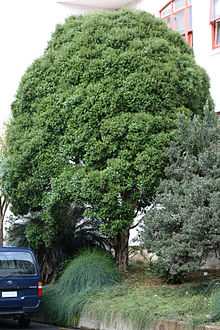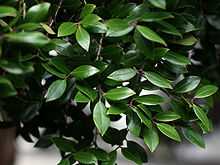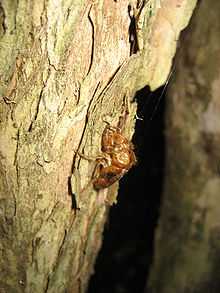Metrosideros bartlettii
| Bartlett's rātā | |
|---|---|
 | |
| Bartlett's rātā | |
| Conservation status | |
| Scientific classification | |
| Kingdom: | Plantae |
| (unranked): | Angiosperms |
| (unranked): | Eudicots |
| (unranked): | Rosids |
| Order: | Myrtales |
| Family: | Myrtaceae |
| Genus: | Metrosideros |
| Species: | M. bartlettii |
| Binomial name | |
| Metrosideros bartlettii J.W.Dawson | |
Bartlett's rātā (Metrosideros bartlettii), or the Cape Reinga white rātā, is one of twelve Metrosideros species endemic to New Zealand and is notable for its extreme rarity and its white flowers, somewhat uncommon in that genus of red-flowered trees and plants. Its natural range is in the far north of the North Island at Te Paki, in three patches of dense native forest near Spirits Bay (34° S) that escaped destruction by fire, namely Radar Bush, Kohuronaki Bush, and Unuwhao Bush. Only 34 adult trees are known to exist in the wild. The lack of fossil evidence elsewhere suggests that the tree may always have been restricted to the North Cape area, which was an island until it was connected to the mainland by the sandspit that constitutes Ninety Mile Beach.
Description

Conservation

Cultivation
Bartlett's rātā grows readily from fresh seed, and prefers sunny sites with fertile, well drained soil. It can also be propagated from hardwood cuttings, although these may be very slow to take root. Plants in cultivation in New Zealand are relatively hardy in a range of conditions, and have shown tolerance of mild frosts, which are unknown in the natural habitat.
See also
External links
References
- "Bartlett, J.W., 1985. Metrosideros bartlettii (Myrtaceae) a new species from North Cape, New Zealand.". New Zealand Journal of Botany, 1985, Vol. 23: 607-610. Retrieved 2010-10-07.
- "Metrosideros bartlettii". New Zealand Plant Conservation Network. Retrieved 2010-10-02.
- Simpson, P., 2005. Pōhutukawa & Rātā: New Zealand's Iron-Hearted Trees. Wellington: Te Papa Press.
- "Drummond, RSM, et al. , 2000. 'Genetic analysis and conservation of 31 surviving individuals of a rare New Zealand tree, Metrosideros bartlettii (Myrtaceae).". Molecular Ecology, 2000, Vol. 9: 1149-1157. Retrieved 2010-06-25.
| Wikimedia Commons has media related to Metrosideros bartlettii. |
